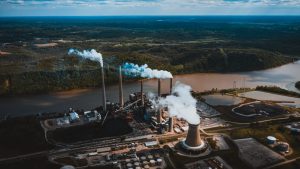Written by Deborah Kiameh
Reading time: 12 minutes
Renewable Energy and Climate Change: A Comprehensive Approach towards Combating Global Warming
Climate change is one of the most pressing challenges facing humanity today. Burning fossil fuels to produce energy is considered a major contributor to global warming and its associated effects. To mitigate the effects of climate change, there is an urgent need to shift to renewable energy sources. This integrated approach aims to study different aspects of renewable energy and their role in combating climate change.
The Urgent Need to Address Climate Change: Understanding the Causes, Impacts, and Solutions
The main driver of climate change is increased greenhouse gas emissions caused by human activities. Burning fossil fuels such as coal, oil and natural gas to produce energy is the greatest contributor to greenhouse gas emissions. These gases trap heat in the Earth’s atmosphere, initiating a phenomenon called the greenhouse effect. Other human activities that contribute to greenhouse gas emissions include desertification, industrial production, and agricultural practices.
Climate Change impacts
Climate change has esoteric impacts on every aspect of the planet. Ascending global temperatures are causing polar ice caps and glaciers to melt, initiating sea levels to rise. This poses a serious threat to coastal residents and low-lying areas and increases the risk of flooding and destruction. Changing rainfall patterns are causing droughts, heat waves, and severe weather events such as hurricanes and cyclones to become more frequent and severe.
• Impacts on Ecosystems and Biodiversity: Climate change is having a profound impact on ecosystems and biodiversity around the world. One of the most significant impacts of climate change on ecosystems is the alteration of species distribution and abundance. As temperatures rise, many species are shifting their ranges poleward or to higher elevations in search of cooler temperatures. This can lead to the loss of biodiversity in the areas that are being left behind, as well as the creation of new ecosystems in the areas that are being colonized. For example, a study published in the journal Nature found that the distribution of North American bird species is shifting northward at a rate of 4.5 miles per decade in response to warming temperatures.
The shifting timing of seasonal events is another effect of climate change on ecosystems. Many species rely on particular seasonal cues to time their life cycles and migrations, such as the timing of flowering or the appearance of insects. These cues are, however, losing accuracy as temperatures rise, causing alterations in the timing of seasonal events. The timing of spring flowering, for instance, has advanced by an average of 3.5 days in the northern hemisphere over the past 30 years, according to a study published in the journal Science. This can have a descending effect on the ecosystem as a whole.
• Impacts on human health: Climate change is having a profound impact on human health, with rising temperatures, more frequent natural disasters, and changing weather patterns all taking a toll on our well-being. Here are some of the key ways in which climate change is affecting human health:
1. Heat-related illnesses: As temperatures rise, the risk of heat-related illnesses such as heat stroke, heat exhaustion, and dehydration increases. This is particularly true for vulnerable populations such as the elderly, children, and people with pre-existing medical conditions.
2. Respiratory problems: Climate change is also linked to an increase in respiratory problems such as asthma and other respiratory allergies. This is due to the increased pollen levels and the spread of pollutants in the air.
3. Vector-borne diseases: Climate change is creating ideal breeding conditions for mosquitoes and other vectors, leading to an increase in vector-borne diseases such as malaria, dengue fever, and Zika virus.
4. Mental health: Climate change is also having a profound impact on mental health, with increased stress, anxiety, and trauma due to natural disasters and the loss of homes and livelihoods.
5. Nutritional deficiencies: Climate change is affecting food security, leading to nutritional deficiencies and malnutrition, particularly in vulnerable populations.
6. Water-borne diseases: Climate change is also linked to an increase in water-borne diseases such as cholera and typhoid fever, due to the increased flooding and contamination of water sources.
7. Cardiovascular disease: Climate change is also linked to an increase in cardiovascular disease, due to the increased heat stress and the exacerbation of air pollution.
8. Infectious diseases: Climate change is also linked to an increase in infectious diseases such as Lyme disease, West Nile virus, and hantavirus, due to the increased exposure to ticks, mosquitoes, and other vectors.
9. Cancer: Climate change is also linked to an increase in cancer, due to the increased exposure to carcinogens and the disruption of the immune system.
10. Health disparities: Climate change is also exacerbating health disparities, particularly for low-income communities and communities of color, who are more vulnerable to the health impacts of climate change.
In conclusion, climate change is having a profound impact on human health, with a wide range of health impacts including heat-related illnesses, respiratory problems, vector-borne diseases, mental health, nutritional deficiencies, water-borne diseases, cardiovascular disease, infectious diseases, cancer, and health disparities.
There are no particular regions or species that are exempt from the effects of climate change on ecosystems and biodiversity. Ecosystems all over the world are experiencing the effects of climate change, which is a global phenomenon. For instance, a study published in the journal Global Change Biology found that as ocean temperatures rise, marine species distribution is shifting poleward, changing the make-up of marine ecosystems. In conclusion, ecosystems and biodiversity all over the world are being significantly impacted by climate change. Climate change’s effects are being felt worldwide in ecosystems through changes in species distribution and abundance, timing of seasonal events, and biodiversity loss.

Solutions to Climate Change
In order to reduce the effects of climate change and ensure an environmentally friendly future for our planet, immediate action is required. Long-term changes in temperature patterns and weather are referred to as “climate change,” and they are mostly brought about by human activities including the combustion of fossil fuels, deforestation, and industrial operations. Global temperatures are rising, ice caps and glaciers are melting, sea levels are rising, extreme weather events are occurring more frequently, biodiversity is disappearing, and ecosystems are being disrupted as a result of climate change.
Effective climate change mitigation requires a multifaceted strategy that integrates several facets and tiers of society. Here are some important measures that can help reduce climate change:
1. Energy Efficiency Improvements: Increasing energy efficiency in all industries is another sensible tactic. This entails making use of energy more effectively in appliances, industries, buildings, and transportation networks. Energy-efficient solutions can cut greenhouse gas emissions dramatically while simultaneously lowering expenses for both consumers and companies. Energy-efficient techniques can be widely adopted by taking steps like enacting building rules that demand energy-efficient designs, promoting energy-efficient equipment through labeling programs, and offering financial incentives for energy-saving renovations.
2. Sustainable Land Use: Deforestation, urbanization, and unsustainable farming practices all contribute considerably to climate change. Sequestering carbon dioxide from the atmosphere can be accomplished by protecting forests and encouraging afforestation and replanting initiatives. Emissions from the agricultural industry can be decreased by using sustainable agriculture techniques as organic farming, agroforestry, and precision farming. Additionally, efficient urban planning can reduce energy use and transportation emissions by emphasizing compact and sustainable cities.
3. Change to Low-Carbon Transportation: The transportation industry contributes significantly to the emissions of greenhouse gases. The transition to low-carbon modes of transportation is essential for reducing climate change. This can be accomplished through increasing the use of electric cars (EVs), enhancing public transit systems, investing in infrastructure for bicyclists and pedestrians, and fostering ride-sharing and carpooling programs. Governments can create charging infrastructure, offer incentives for EV adoption, and set up regulations that forbid the use of fossil fuel-powered vehicles.
4. Carbon Pricing and Market Mechanisms: Implementing carbon pricing strategies like carbon taxes or cap-and-trade programs can generate financial incentives for cutting greenhouse gas emissions. These measures encourage businesses and people to adopt greener technologies and procedures by placing a price on carbon. Carbon pricing revenue can be invested in renewable energy initiatives, energy efficiency initiatives, and climate change mitigation strategies.
5. International co-operation and policy frameworks are necessary because climate change is a global issue that calls for coordinated global action. Countries can discuss and put into effect climate policies through the United Nations Framework Convention on Climate Change (UNFCCC). Aiming to keep global warming far below 2 degrees Celsius above pre-industrial levels, agreements like the Paris Agreement. Effective climate action requires bolstering international commitments, exchanging best practices, and supporting developing nations financially and technologically.
6. Public Education and Awareness: Raising awareness of climate change is crucial for changing people’s behavior and inspiring collective action. Education programs can help people understand the factors that contribute to climate change, its effects, and alternative solutions. By promoting sustainable lifestyles, responsible consumer behavior, and preserving the environment, people can minimize greenhouse gas emissions in their daily lives.
7. Research and Development: It’s critical to keep investing in research and development for the development of climate change solutions. This entails creating ground-breaking technology, expanding the effectiveness of renewable energy sources, improving carbon capture and storage techniques, and identifying environmentally friendly substitutes for high-emission businesses. Collaboration between government, business, and academia can accelerate the implementation of novel ideas.
8. Reduce our reliance on fossil fuels and move toward renewable energy sources including solar, wind, hydroelectric, and geothermal power as one of the most important measures in mitigating climate change. Compared to fossil fuels, these sources are much more plentiful, cleaner, and emit much fewer greenhouse gases. The use of renewable energy can be encouraged by governments through the use of programs like feed-in tariffs, tax credits, and subsidies. Additionally, it is crucial to make investments in R&D to increase the effectiveness and cost of renewable technology.
Accordingly, shifting to renewable energy is essential for reducing climate change and securing a sustainable future. However, there are a number of barriers that prevent this shift. These issues fall under three major categories: those that are economic, technological, and policy-related.
• Economic Obstacles:
- High upfront costs: Renewable energy technologies such as solar and wind power require significant upfront investments, which can be a barrier for many consumers and businesses.
- Lack of financing: Access to financing is a major challenge for renewable energy projects, particularly for small-scale projects.
- Energy storage: The cost of energy storage technologies is still relatively high, which can make it difficult to store and use renewable energy when it is generated.
• Technological Obstacles:
- Intermittency: Renewable energy sources are intermittent, which means that they are not always available when needed. Examples of intermittent renewable energy sources are solar and wind power.
- Efficiency: The efficiency of renewable energy systems can be problematic, especially for solar power, which is subject to environmental factors like weather.
- Grid integration: It can be difficult to integrate renewable energy sources into the current grid, especially if the infrastructure is not built to accommodate the varied output of renewable energy sources.
• Policy-related Obstacles:
- Lack of supportive policies: The switch to renewable energy sources may be significantly hampered by the absence of favorable laws and regulations.
- Subsidies for fossil fuels: Government subsidies for fossil fuels are still common, which might make it harder for clean energy sources to compete.
- Resistance from fossil fuel industries: The fossil fuel industry can resist the transition to renewable energy, particularly if it threatens their economic interests.
Despite all the hurdles, the advantages of renewable energy are numerous and significant, as they address various economic, environmental, and social concerns since it refers to energy sources that are naturally replenished and have a minimal impact on the environment. These sources include solar, wind, hydroelectric, geothermal, and biomass energy.

The Green Transition
1. Environmental Benefits: Positive environmental effects are one of the main benefits of renewable energy. In contrast to fossil fuels, renewable energy sources emit almost no greenhouse gases while in use. By lowering the quantity of carbon dioxide and other pollutants emitted into the atmosphere, this helps to moderate climate change. Furthermore, renewable energy sources minimize the detrimental effects on ecosystems and public health by not adding to air or water pollution.
2. Energy Security and Independence: Countries benefit from better energy security and independence thanks to renewable energy sources. Renewable energy can be produced domestically, unlike fossil fuels, which are frequently imported from other regions or nations. This limits reliance on imported energy sources and decreases vulnerability to changes in price or supply.
For instance, nations with a wealth of wind resources can use wind energy to generate electricity instead of importing coal or natural gas to do so. Nations can improve their energy security and lessen their susceptibility to the geopolitical risks brought on by the importation of fossil fuels by diversifying their energy mix with renewables.
3. Economic Advantages: Numerous financial benefits of renewable energy support sustainable growth. First off, it generates employment in the field of renewable energy. The International Renewable Energy Agency (IRENA) estimates that over 11 million people worldwide were employed in the sector in 2018. The manufacturing, installation, operation, and maintenance of renewable energy systems all result in job development.
In addition, technologies for renewable energy are increasingly cost-competitive with those for fossil fuels. Solar panels, wind turbines, and other forms of renewable energy equipment are becoming more widely available and more reasonably priced. This has caused the deployment of renewable energy to rapidly increase throughout the world.
4. Public Health Benefits: There are substantial advantages for public health in using renewable energy sources. Air pollution from conventional energy sources like coal and oil is linked to respiratory issues, cardiovascular disorders, and early mortality. The emissions of dangerous pollutants including sulfur dioxide, nitrogen oxides, and particulate matter can be greatly decreased by switching to renewable energy.
For instance, switching from coal-fired power plants to solar or wind farms can enhance the local area’s air quality and lower the prevalence of respiratory ailments. Along with enhancing public health, this also lowers the price of treatment for illnesses brought on by pollution.
5. Sustainability and Resource Conservation: Because they rely on resources that are constantly regenerating, renewable energy sources are sustainable. Renewable energy can be used continuously without losing the source, in contrast to fossil fuels, which are limited and decreasing. Future generations can be assured that energy will be available for a long time.
Furthermore, compared to traditional power plants, renewable energy solutions frequently use less water during operation. This is crucial in areas where there is a water shortage or a drought. For instance, unlike thermal power plants that use a lot of water for cooling, solar photovoltaic systems do not need water to generate electricity.
In conclusion, it is imperative that we take immediate action to combat climate change and transition to renewable energy sources. The consequences of inaction are dire, with potentially irreversible damage to our planet and future generations. By embracing renewable energy, we can mitigate climate change, create a sustainable future, and ensure the well-being of both our environment and society. Together, let us work towards a greener and more sustainable world.

“Advocator for women’s rights, Deborah Kiameh is an executive member for an international NGO called ZONTA. She also is a member in the national debate institute in Lebanon. She studied her professional career in both Architecture and Law, after she graduated she founded her own NGO circulating around urbanized sustainable projects. Deborah’s current occupation is a General Manager in a travel and tourism company. Raising awareness of the importance of sustainability is one of her main priorities. Future generations should not be deprived of resources and opportunities due to the lack of mismanagement in the world today. She believes CoSE addresses global issues and aids in funding projects towards environmental, ecological and health problems.”
BIBLIOGRAPHY
References:
– “Climate Change and Human Health” (2018) World Health Organization. <https://www.who.int/news-room/fact-sheets/detail/climate-change-and-human-health>
-“The Health Impacts of Climate Change” (2019) Union of Concerned Scientists. <https://www.ucsusa.org/our-work/global-warming/science-and-impacts/health-impacts-of-climate-change>
– “Climate Change and Health” (2020) Centers for Disease Control and Prevention. <https://www.cdc.gov/climate-and-health/index.htm>
-Thomas, C. D., et al. “Long-term population declines in North American birds that migrate to the neotropics.” Nature, vol. 538, no. 7624, 2016, pp. 124-127.
– Schwartz, M. D., et al. “Climate change and the global distribution of plant and animal species.” Science, vol. 347, no. 6229, 2015, pp. 1249-1252.
– Sala, O. E., et al. “Global biodiversity scenarios for the year 2100.” Science, vol. 347, no. 6229, 2015, pp. 1252-1255.
– “Climate Change and Human Health” (2018) World Health Organization. <https://www.who.int/news-room/fact-sheets/detail/climate-change-and-human-health>
– “The Health Impacts of Climate Change” (2019) Union of Concerned Scientists. <https://www.ucsusa.org/our-work/global-warming/science-and-impacts/health-impacts-of-climate-change>
– “Climate Change and Health” (2020) Centers for Disease Control and Prevention. <https://www.cdc.gov/climate-and-health/index.htm>
– International Energy Agency. (2019). Renewable Energy Market Analysis. Retrieved from <https://www.iea.org/renewableenergy/renewable-energy-market-analysis/>
– National Renewable Energy Laboratory. (2019). Renewable Energy Policy and Markets. Retrieved from <https://www.nrel.gov/policy/renewable-energy-policy-and-markets.html>
– Union of Concerned Scientists. (2019). Barriers to Renewable Energy. Retrieved from <https://www.ucsusa.org/clean-energy/barriers-to-renewable-energy>
-Intergovernmental Panel on Climate Change (IPCC) – www.ipcc.ch
– United Nations Framework Convention on Climate Change (UNFCCC) – unfccc.int
– National Aeronautics and Space Administration (NASA) – www.nasa.gov



